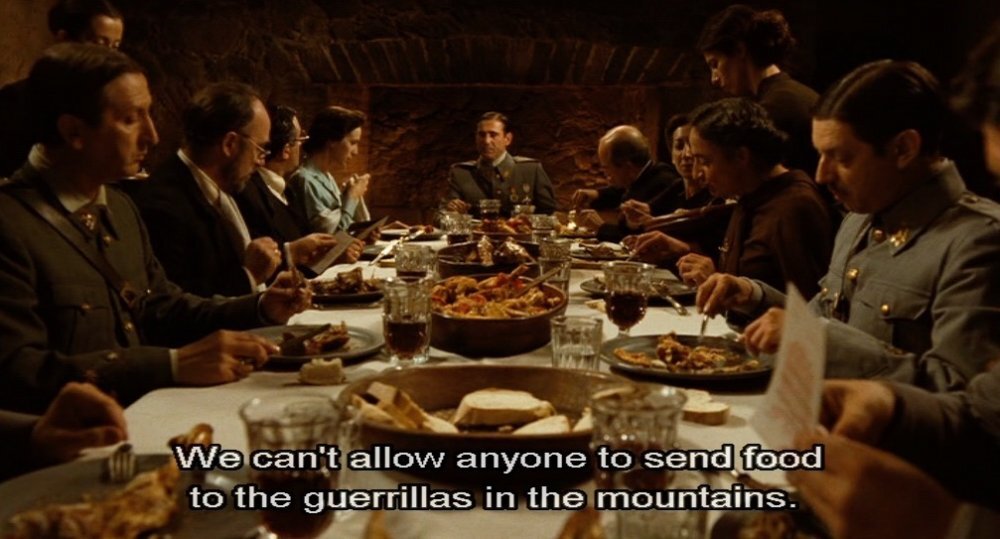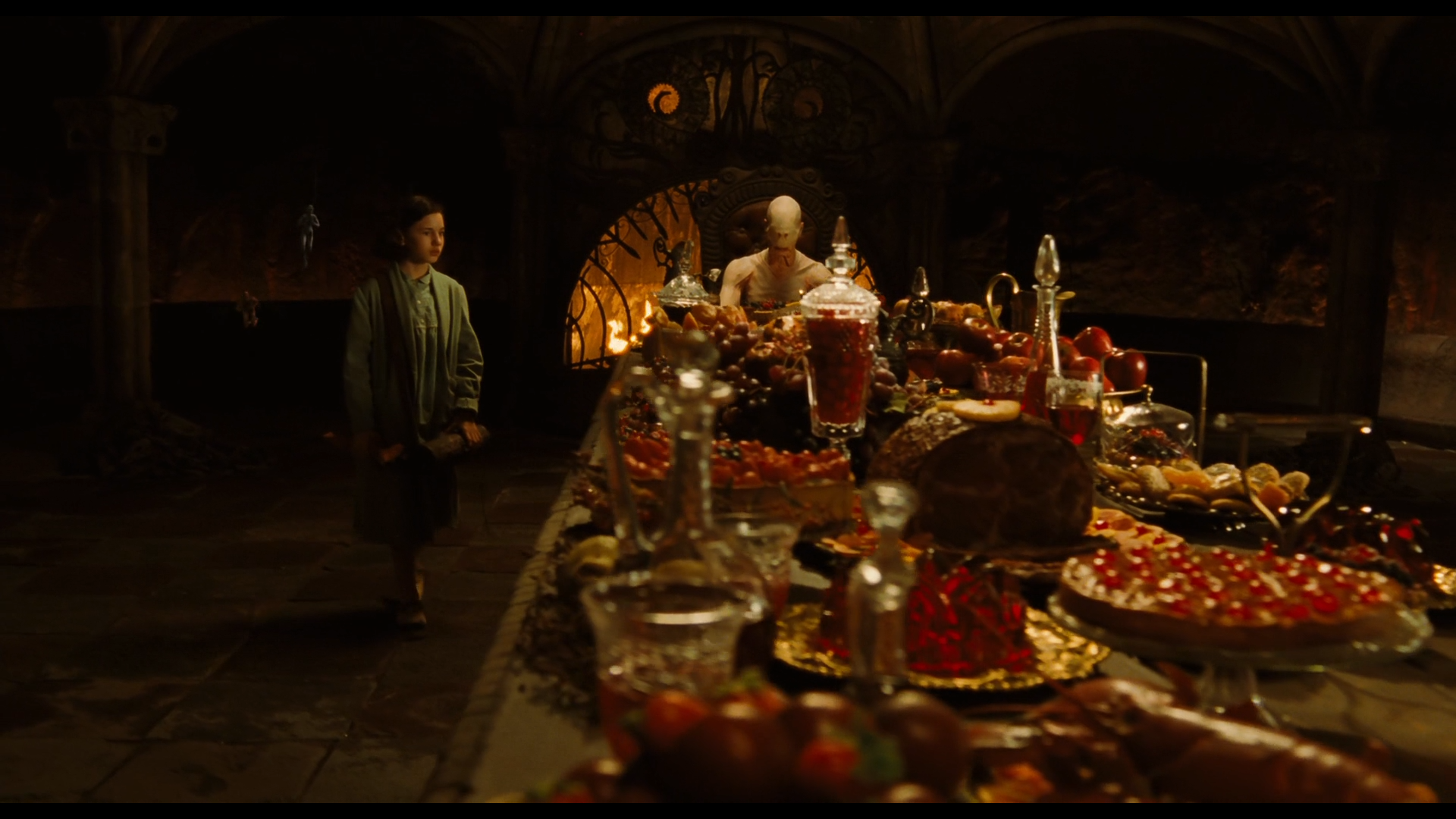The Meaning of the Pale Man
October is one of my favourite months because it’s the start of autumn and the bearer of Spooky Season. I couldn’t let October pass without doing some kind of video on something spooky. A few months ago, I did a series of short posts on my blog where I dug into the deep study of monsters from popular culture – which, in retrospect, I should have really saved for October. These were a bit short and quick, and I wanted to do one into one of my favourite monsters from pop culture but had far too much to say. So, let’s do that deep-dive now, just in time for Halloween. Let’s dig into the deeper meaning and importance of the Pale Man from del Toro’s Pan’s Labyrinth.
In 2006, Guillermo del Toro’s film Pan’s Labyrinth, or its original Spanish title El Laberinto del Fauno, was initially released. Pan’s Labyrinth is described as a dark fantasy, one that references styles of fiction like magical realism to blur the lines between fiction and reality. The magical fantastical world is not drastically different from the violent realities of the world. Each monster that the protagonist Ofelia faces is both scary and dangerous. Perhaps one of the most memorable and prominent monsters of the film is the Pale Man – a creature whose eyeball hands chase Ofelia down hallways with the intention of eating her. My love of monsters, and love of this film, meant that I had to spend this October explaining the Pale Man.
Pan’s Labyrinth takes place in Spain 1944, five years after the Spanish Civil War. The movie focuses on a young, small girl named Ofelia, who has travelled with her mother Carmen to live with her stepfather. Her stepfather, Captain Vidal, is stationed in the countryside, hunting down rebels who are still fighting against the Fascist regime that has taken over the country. While in the camp, Ofelia meets a faun, who tells her she is the reincarnation of Princess Moanna of the underworld. In order to return to her kingdom, she must complete three tasks. Ofelia’s tasks are interwoven with the overt violence of her stepfather toward not only the anti-Fascist rebels, but also toward Ofelia and her mother.
Pan’s Labyrinth not only draws on fairy-tales, but is also a new fairy-tale itself, but one set in the world we more readily recognise. Ofelia’s quest is set in intricate relationship with the gritty reality of the adult world of violence around her. At one point, Ofelia is given a mandrake root to put under her mother’s bed, as Carmen is suffering a lot through a troubling pregnancy. She continues to tend to the mandrake root based on the instruction, and her mother begins to recover. However, it’s found by Vidal, and thrown into the fire by Carmen – where it screeches. The mandrake’s reality in the world is somewhat validated by the other figures, even though it is simultaneously questioned.
Fairy-tales, like all cultural narratives, are inherently a part of our social landscape. They find homes in our minds and societies for a reason. Their meanings and reasonings are inherently a part of this landscape. Fairy-tales can therefore be subversive – their meanings and reasonings can be transformed through time and location to bring in new aspects. Disney has done this to fairy-tales for decades, transforming their meanings to fit the ideology Disney saw.
Pan’s Labyrinth is a subversive fairy tale. Pan’s Labyrinth primarily focuses its subversion on cultural myths, the primary one being the position of women in society. The role of women is explored through three primary female figures.
The first is Carmen, Ofelia’s mother. Carmen fits the role of the obedient woman, who lives the roles prescribed to women in patriarchal mindsets. She takes her role as wife as one which is subservient to her abusive husband, and sees no issues with her life being forfeit for bringing a child into the world. Carmen represents the role of subservient woman, whose defined by her role as wife and mother.
Mercedes, Vidal’s housekeeper, plays the role of the subservient woman along with Carmen. She, however, is secretly disobeying. She uses her role as woman to work directly under the nose of Vidal while simultaneously helping the rebels in the nearby forest. Mercedes is very actively aware of the sexism of her society, and has decided to actively use it to her own political and social advantage.
Our third female figure, Ofelia, is the direct opposite to Carmen, and carries fully the disobedience of Mercedes without any of her play at obedience. Ofelia seems to enjoy the role of disobeying. She disobeys her role as daughter, and thereby owned by Vidal, very early in the film. She disobeys in subtle ways, like her glee at her mother’s disappointment that she got her new dress really muddy. But she also disobeys larger gender roles, like her rejection of the female need to produce children.
The gender roles that are either obeyed or disobeyed by these women is important in our consideration of the Pale Man because the Pale Man sits within these gender dynamics. The Pale Man, as hinted at in his name, is an embodiment of the patriarchal white man. And this doesn’t even come from my own deep-reading of the film. Guillermo del Toro wrote a tweet regarding the Pale Man, saying “The Pale Man represents all institutional evil feeding on the helpless. It’s not accidental that he is a) Pale b) a Man. He’s thriving now. These are Pale Man times.” Del Toro also portrays this by pairing the Pale Man with the other patriarchal evil and powerful figure: Vidal.
Before Ofelia’s encounter with the Pale Man, we see another banquet scene. Vidal hosts several members of the Franco’s fascist party for a dinner. We see them seated around a long rectangular table, feasting on a variety of food. At this party, we hear them talk about the initiation of food rations while feasting on the large portions of food they had available to them. At this table, Vidal positioned himself at the head, seated in front of a large fireplace.
This scene is directly paired with the Pale Man’s banquet. Before going to the Pale Man, Ofelia is instructed to not eat, not even a single grape – a similar restriction put on those given food rations. The Pale Man’s table is seen in similar shots to Vidal’s banquet hall. And it’s no mistake that the Pale Man also sits at the head of the table, in front of a large fireplace.
Now let’s turn our attention to how the Pale Man actually looks. His body is pale, as clued in by the name, and his skin is flabby and strange. The most notable is his clear, almost completely faceless features. His eyes sit in a plate in front of him, and when he is awakened by Ofelia’s eating of a grape, he puts them in the palms of his hands.
The faceless monster is not inherently new with the Pale Man. Even though it came after, the Slender Man’s structure is incredibly similar. If you slapped a suit on the Pale Man it would be rather similar. The faceless monster has been used a lot in surrealist art, and is primarily used to depict the human condition. It functioned almost a mirror – a creature whose face could be replaced with anyone and the same idea would stick.
Speaking of the Slender Man, the Slender Man’s facelessness is also tied a lot to the facelessness of the victims. Victims become more and more detached from regular society until they completely disappear. The disappear aspect is important as well. The children the Slender Man takes simply disappear with no trace – leaving them completely faceless to the rest of society as a victim itself.
I mention that here because there is a similarity with the presentation of victims to the Pale Man. The only clue to these victims even existing is the images drawn in the back of the room and the pile of children’s shoes in the corner. The invisibility of the Pale Man’s victims also mirrors the invisibility of the victims of a fascist regime. The pile of shoes for the Pale Man feels eerily similar to the piles of clothing and shoes left behind at the concentration camps of Nazi Germany. The replacement of the eyes in the hands also seems to echo the invisibility – the inability to see individuals unless directly attacking them.
We see the notion of the invisible population in the eyes of the Pale Man monsters outside of the Pale Man’s banquet hall. The women in the film are equally invisible in the eyes of Vidal. His wife is simply the receptacle for his future son, his housemaid Mercedes is just a body that does chores, and Ofelia is simply in the way.
The whole theme of Pan’s Labyrinth is disobedience, and the disobedience most presented is from the invisible figures who are typically victims of patriarchal violence and thought. While the doctor and the rebels are also figures of disobedience, Mercedes disobedience is presented as far more dangerous and subversive of sexist thought. But we’re going to focus more here on the disobedience of Ofelia.
Ofelia is constantly disobeying throughout the movie. It starts strongly with her rejection of calling Vidal her father. She also muddies her nice clothes, and seems quite pleased about it. She says no directly to Vidal when carrying her brother.
So we got that the Pale Man is this embodiment of patriarchal white violence, and we have a theme of disobedience. These two themes combine in the relatively short scene of Ofelia’s interaction with the Pale Man – and this interaction tells us everything about what we need to learn from the Pale Man.
When faced with the Pale Man, Ofelia has two primary moments of disobedience. The first is when she is being directed to the door to get the key by the fairies. The fairies point to the door in the middle for Ofelia to open, but she refuses and instead opens the one to the left. The second moment of disobedience is also the most obvious one: despite the faun’s instructions against doing so, Ofelia eats from the Pale Man’s banquet. This disobedience results in the Pale Man chasing after her to try and devour her.
Ofelia’s instance on eating at the banquet at first appears to be a wrong move of disobedience. Most of her other acts of disobedience are in some way “correct” choices. Her last act of disobedience of the movie – when she refuses the faun’s instructions to spill her brother’s blood – is revealed to be the right choice to getting her access to the underground kingdom. The smaller moments of disobedience – saying no to Vidal or rejecting him as father – are small acts of more-or-less correct disobedience by rejecting the primary violent antagonist.
And its in the revealing of the subtle rejections of Vidal that the eating of the food from the Pale Man rests. Ofelia’s stealing of his grapes represents the rejection of the powerful white male control over food – it was her removal of food from Vidal’s banquet table without needing to be present at Vidal’s feast. With that in mind, her removal of food from his table is therefore somewhat tied to the notion of making a “correct” move of disobedience.
What this means is that the Pale Man’s representation of the white patriarchy is more than just a direct obvious connection to his name –his lair also reveals aspects of the patriarchal society’s power dynamics. But more importantly, the way Ofelia interacts with the Pale Man shows us the best way to live in, as del Toro puts it, Pale Man times. We must disobey – we must eat from their table, reject their orders, and fight.






